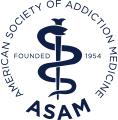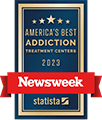Understanding Stimulants Addiction
Learn About Stimulants Abuse & Addiction
Stimulants are a group of substances that include cocaine, methamphetamines, and amphetamines. Classified as a Schedule II substance by the Drug Enforcement Administration (DEA), stimulants are highly likely to be abused.
Stimulants such as prescription amphetamines are very beneficial for those who battle with attention-deficit/hyperactivity disorder (ADHD). These medications, which include Ritalin and Adderall, can enhance an individual’s ability to stay focused and maintain their attention span. Those who do not have ADHD and who choose to take these substances find that they obtain a boost in energy, alertness, and attention. Methamphetamine and cocaine can bring on similar effects, as well as produce a sense of euphoria and increased self-confidence. Stimulants are also effective in suppressing appetite, making them appealing to those who desire to lose weight.
When individuals abuse stimulants of any kind to a point where they begin to suffer in their ability to function, it is likely that they have developed stimulant use disorder. As soon as a stimulant disorder develops, it can be tremendously challenging to overcome it without the help of professionals. Luckily, there is treatment available.
Statistics
Statistics of Stimulants Abuse
Sadly, the abuse of stimulants is something that impacts millions of people throughout the country. For example, methamphetamine is said to be abused by nearly 1.2 million people, and the Office of National Drug Control Policy reports that roughly 3.6 million people abuse cocaine. Nearly 13 million people are said to abuse amphetamine without having medical reasons for doing so.
Causes & Risk Factors
Causes & Risk Factors of Stimulants Abuse
Possible causes and risk factors linked to the development of stimulant use disorder can include:
Environmental: An individual’s environment can have an impact on his or her likelihood of abusing stimulants or developing stimulant use disorder. The American Psychiatric Association (APA) notes that being exposed to cocaine during one’s childhood and having parents who abuse this substance can increase an individual’s likelihood of also doing the same. In addition, being witness to community violence or the abuse of other substances can also play a role in an individual’s likelihood of abusing stimulants.
Risk Factors:
- Abusing other types of substances
- Being impulsive or possessing other similar personality traits
- Being exposed to violence during childhood
- Growing up in an unstable home environment
- Having a diagnosis of childhood conduct disorder
- Suffering from other mental health conditions, including schizophrenia, bipolar disorder, or antisocial personality disorder
Signs & Symptoms
Signs & Symptoms of Stimulants Abuse
When individuals are struggling with stimulant abuse, the signs and symptoms that they might show will vary depending on a number of aspects, including the type of stimulant being abused, the length of abuse, and the frequency of abuse. Some of these symptoms can include:
Behavioral symptoms:
- No longer fulfilling obligations at work or home
- Hypervigilance
- Engaging in dangerous activities in order to obtain one’s stimulant of choice
- Repetitive movements
- No longer participating in activities that were once enjoyed
- Changes in social interactions
Physical symptoms:
- Seizures
- Perspiration or chills
- Lowered or elevated blood pressure
- Dilated pupils
- Nausea
- Vomiting
- Chest pain
- Rapid heartbeat
- Noticeable weight loss
- Muscle weakness
Cognitive symptoms:
- Confusion
- Impaired judgment
- Experiencing intense cravings for stimulants
Psychosocial symptoms:
- Anxiety
- Brief periods of euphoria
- Lack of emotional reactivity
- Anger
- Psychological distress
Co-Occurring Disorders
Stimulants Abuse & Co-Occurring Disorders
Those who struggle with stimulant use disorder often battle other mental health conditions at the same time. Some of these individuals are more likely to abuse other substances, too. The APA states that the most common substances abused by stimulant users are sedatives, as they can help iron out the effects of stimulants.
Below are some of the many disorders that can co-occur with stimulant use disorder:
- Antisocial personality disorder
- Gambling disorder
- Schizophrenia
- Bipolar disorder
- Posttraumatic stress disorder (PTSD)
- Attention-deficit/hyperactivity disorder (ADHD)
- Alcohol use disorder
- Other substance use disorders
Effects of Withdrawal & Overdose
Effects of Withdrawal & Overdose From Stimulants
When stimulant abuse is present within an individual’s life, he or she becomes more likely to go through a series of negative consequences. The effects that can develop will vary based on the way the stimulant is being consumed, the frequency of abuse, the type of stimulant that is being taken, and the period of time that an individual is using for.
Abusing stimulants intravenously can lead to the following effects:
- Contracting hepatitis or HIV/AIDS
- Becoming infected with tuberculosis
- Lung infections
- Puncture marks
Intranasal stimulant abuse can cause the below listed effects:
- Sinusitis
- Punctured nasal septum
- Nasal irritation
- Nasal bleeding
Inhaling stimulants can cause the following effects to develop:
- Respiratory distress
- Pneumonitis
- Bronchitis
- Coughing
Abusing stimulants at all, regardless of the route of admission, can cause the following:
- Academic failure
- Job loss
- Significant weight loss
- Deteriorated relationships
- Cognitive impairment
- Malnutrition
- Chest pains
- Irregular heartbeat
Effects of stimulant withdrawal: When individuals either stop or curb their stimulant abuse, they will likely develop withdrawal symptoms that can be painful. Some of these symptoms can include the following:
- Disturbed social interactions
- Other types of functional impairment
- Psychomotor retardation
- Impaired ability to perform occupationally
- Dysphoric mood
- Psychomotor agitation
- Vivid, unpleasant dreams
- Fatigue
- Increase in appetite
Effects of stimulant overdose: Sadly, the potential for overdose is very likely for those who abuse stimulants. An overdose can happen when an individual consumes too much of a substance for his or her body to properly metabolize. As the dosage they continue to take increases, or they start using it more often, the risk for overdose becomes greater. If an overdose does occur, emergency medical treatment should be immediately obtained. Some of the signs of a stimulant overdose can include:
- Seizures
- Stroke
- Chest pain
- Cardiac arrest
- Hypertension
- Vomiting
- Feelings of panic
- Heart palpitations
- Irregular breathing
- Cramping
- Flushing of the skin
- Excessive sweating













